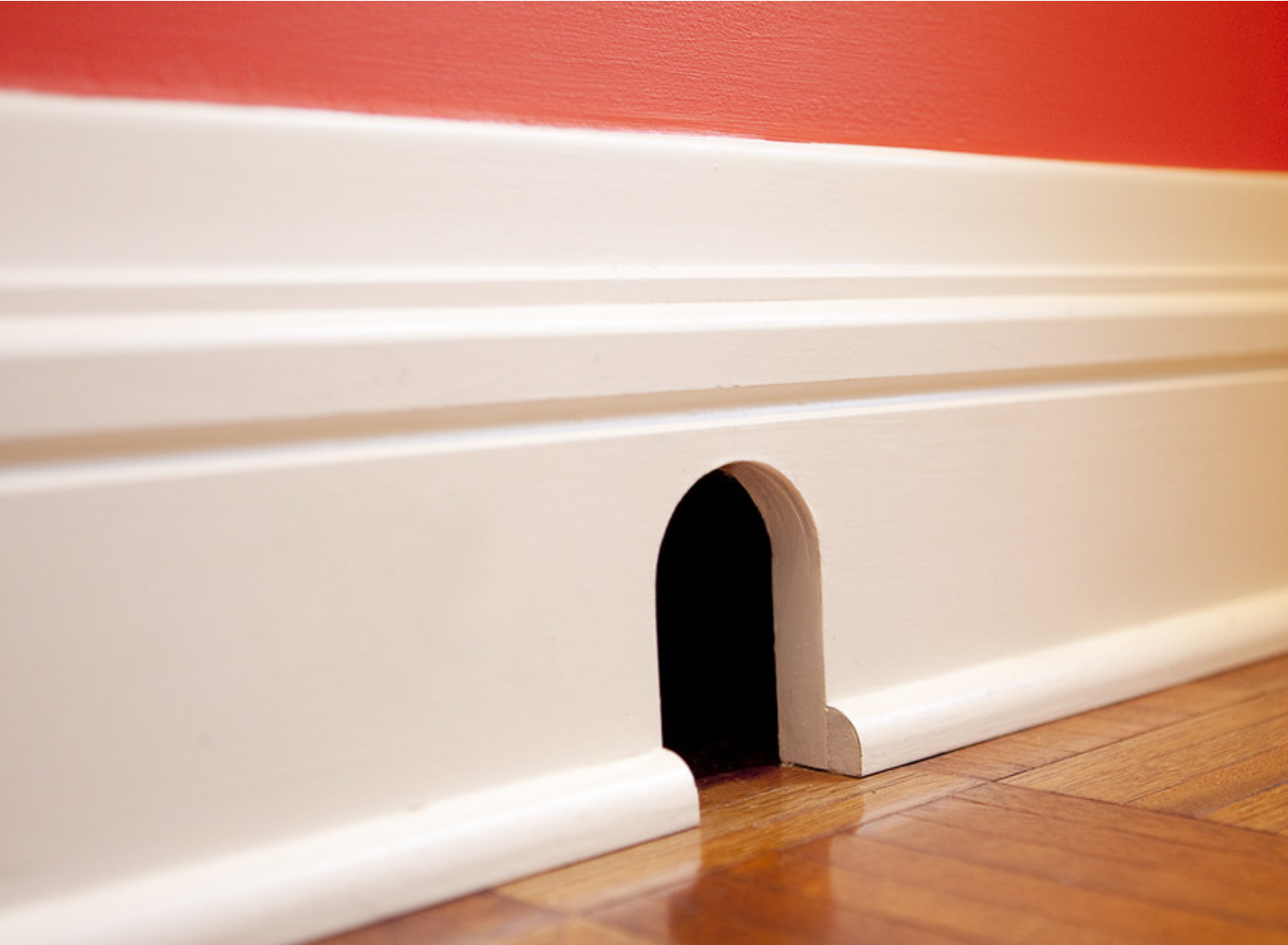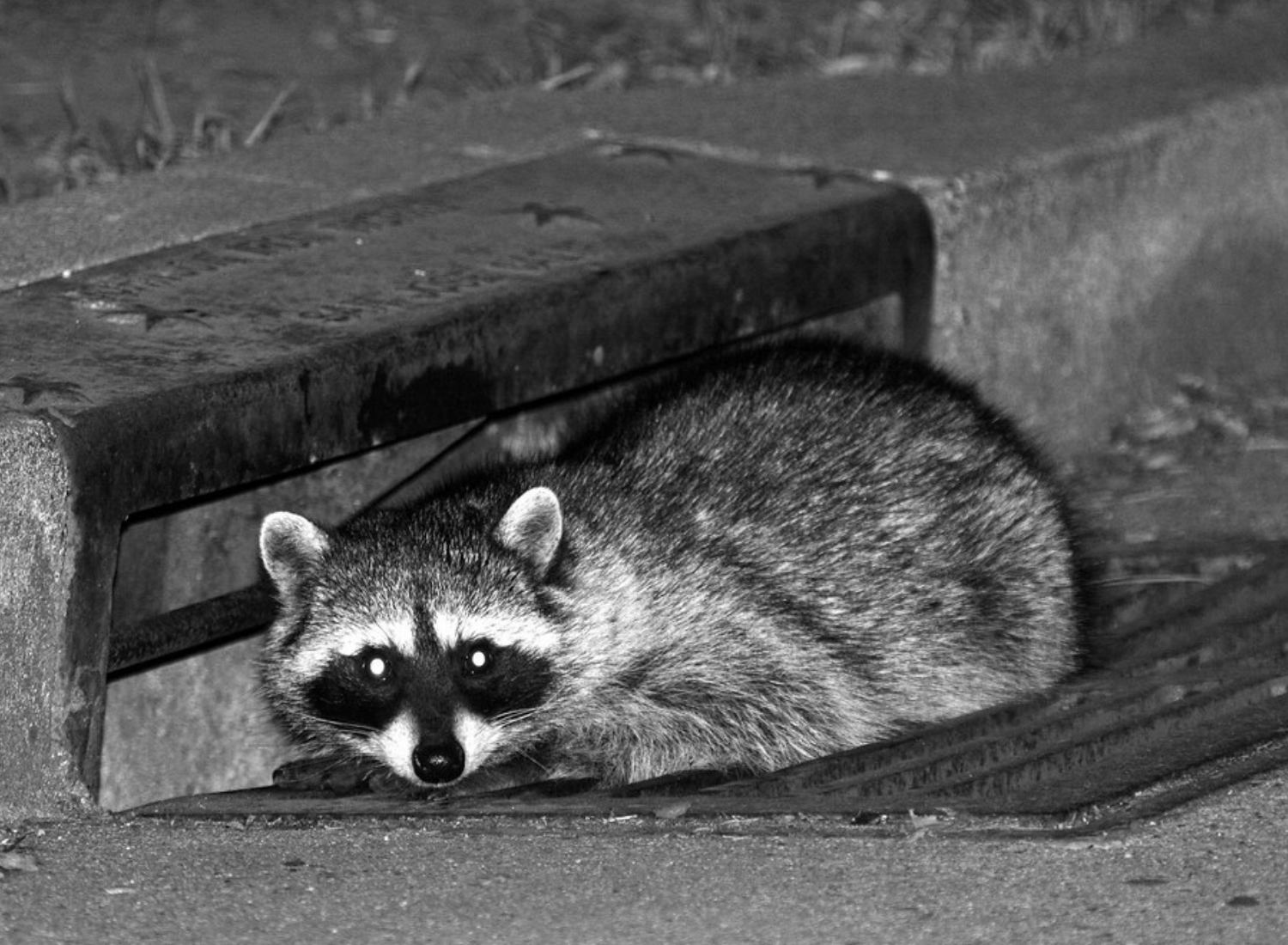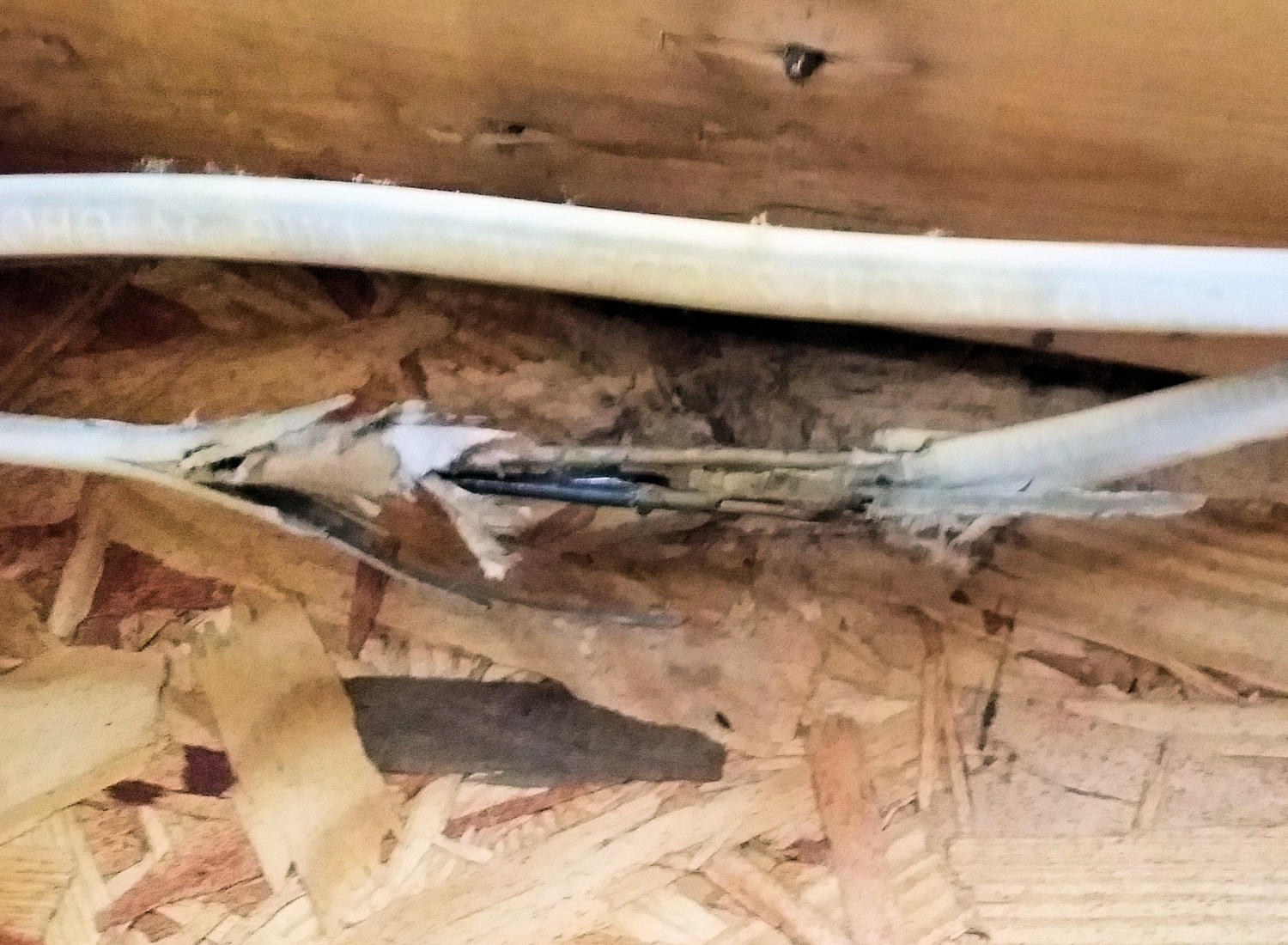Rat Hole vs. Mouse Hole

Take a look at this, initially discovered on: Flickr click here
Are you finding mysterious holes around your property, unsure if they are the work of rats or mice? Each type of rodent leaves behind distinctive burrows, with features that can clue you into their origin.
Generally, rat holes are more complex, extensive, larger, and deeper, as rats are larger in size compared to mice. On the other hand, mouse holes are smaller and have a simpler design.
In this article, we will delve into the unique characteristics of rat and mouse holes, from their size and complexity to their preferred locations, helping homeowners and pest professionals tackle rodent issues more efficiently.
What we cover
ToggleThe complexity of rat and mouse burrows

Source: Flickr
Burrows are intricate tunnels dug by small mammals such as rats and mice. These secretive creatures use burrows for:
- Shelter
- Food storage
- Nesting
Rat burrows are generally more complex than mouse holes, as rats are larger and require more space.
Rat burrows can be extensive, with multiple entrances and exits. They can also be deeper, with tunnels that can go up to several feet underground. In contrast, mouse holes are usually shallower and have only one or two entrances.
Rats are also known to create elaborate chambers within their burrows. These chambers serve as nesting areas and can be lined with soft materials such as grass and leaves. In addition, rats may create separate chambers for storing food.
Mouse holes, on the other hand, are simpler in design. They typically consist of a single tunnel that leads to a nest. However, mice can also create multiple entrances to their burrows, which can make them harder to detect.
Identifying rat and mouse infestation

Source: Flickr
Rat and mouse infestations are common problems that many homeowners face. Identifying the type of infestation is important because the methods used to control them can differ. Here are some signs to look for to determine whether you have a rat or mouse infestation.
1. Droppings
Both rats and mice leave droppings that can be used to identify their presence. Rat droppings are larger, with a length of about 3/4 inch, while mouse droppings are smaller, with a length of about 1/4 inch. Rat droppings are also more tapered at the ends, while mouse droppings are more rounded.
2. Tracks
Rats and mice also leave tracks, which can be used to identify their presence. Rat tracks are larger and can be up to 1 inch long, while mouse tracks are smaller and can be up to 3/4 inch long.
3. Smell of urine
The smell of urine is another sign of rat or mouse infestation. Rats and mice mark their territory with urine, which can leave a strong odor in the air.
4. Squeaking, scratching, and scurrying
Rats and mice are nocturnal creatures, so you may hear them moving around at night. Rats are larger and can make louder noises, while mice are smaller and tend to make softer noises.
5. Fresh dirt
Rats and mice dig burrows and tunnels, which can be identified by fresh dirt around the area.
6. Pheromones
Rats and mice also leave pheromones, which can be used to identify their presence. These pheromones can be detected with a black light.
Pests associated with rat and mouse holes
Rat and mouse holes are not only unsightly but also pose a risk of harboring pests that can cause damage to your property and health. Here are some of the pests that are commonly associated with rat and mouse holes:
1. Rats

Source: Flickr
Rats are notorious for carrying diseases and causing extensive damage to buildings, furniture, and electrical wiring. They can also contaminate food and water supplies with their droppings and urine, which can lead to health problems.
2. Mice
Mice are smaller than rats but can still cause significant damage to your property. They are known for chewing through electrical wiring, which can cause fires. Mice can also carry diseases and contaminate food and water supplies with their droppings and urine.
3. Skunks

Source: Flickr
Skunks are attracted to rat and mouse holes because they provide shelter and food sources. They can also dig their own holes and burrows, which can cause damage to your property. Skunks are known for their strong odor and can spray if they feel threatened.
4. Badgers
Badgers are another animal that can cause damage to your property by digging holes and burrows. They are attracted to areas with rodents, so rat and mouse holes can be a prime location for them. Badgers are known for their ferocity and can be dangerous if provoked.
5. Voles

Source: Flickr
Voles are small rodents that are attracted to areas with vegetation. They can cause damage to gardens and lawns by eating plants and roots. Voles can also dig their own holes and burrows, which can be mistaken for rat and mouse holes.
6. Raccoons

Source: Flickr
Raccoons are attracted to areas with food sources, so they can be found near rat and mouse holes. They are known for their ability to open trash cans and can cause damage to property in search of food. Raccoons can also carry diseases and parasites, which can be transmitted to humans and pets.
7. Chipmunks

Source: Flickr
Chipmunks are small rodents that are attracted to areas with food sources. They can cause damage to gardens and lawns by eating plants and seeds. Chipmunks can also dig their own holes and burrows, which can be mistaken for rat and mouse holes.
8. Woodchucks

Source: Flickr
Woodchucks are attracted to areas with vegetation and can cause damage to gardens and lawns by eating plants and roots. They can also dig their own holes and burrows, which can be mistaken for rat and mouse holes. Woodchucks are known for their ability to dig extensive tunnels, which can cause damage to foundations and other structures.
Structural damage caused by rats and mice
Rats and mice can cause significant structural damage to buildings by gnawing on various materials, including wood, insulation, wiring, and plumbing. They can also create holes in walls, ceilings, and floors, and can damage vents, conduits, and cable lines.
In this section, we will discuss the structural damage caused by rats and mice in various areas of a building.
1. Attic and access spaces

Source: Flickr
Rats and mice can easily access attics and other access spaces through small openings or cracks. Once inside, they can cause significant damage to insulation, wiring, and plumbing.
They can also create nests and gnaw on wooden beams, causing structural damage. Homeowners should regularly inspect their attics and access spaces for signs of rodent activity, such as droppings, gnaw marks, and nests.
2. Vents and conduits
Rats and mice can enter buildings through vents and conduits, and can cause damage to these structures by gnawing on them. They can also create nests inside vents and conduits, which can lead to blockages and other issues.
Homeowners should regularly inspect their vents and conduits for signs of rodent activity and should seal any openings or cracks to prevent rodents from entering.
3. Bathroom and plumbing
Rats and mice can enter bathrooms through small openings or cracks and can cause damage to plumbing and other structures. They can also create nests inside walls and floors, which can lead to water damage and other issues.
It’s good practice to regularly inspect bathrooms for signs of rodent activity, such as droppings and gnaw marks, and seal any openings or cracks to prevent rodents from entering.
4. Wiring and cable lines

Source: Pinterest
Rats and mice can cause significant damage to wiring and cable lines by gnawing on them. This can lead to electrical issues, such as shorts and fires, and can also cause problems with cable and internet service.
Homeowners should regularly inspect their wiring and cable lines for signs of rodent activity and should seal any openings or cracks to prevent rodents from entering.
Health risks associated with rats and mice

Source: Flickr
Rats and mice are known carriers of many diseases that can be harmful to humans. They can spread these diseases through their urine, feces, and saliva. It is important to take precautions to prevent exposure to these diseases.
1. Diseases
Rats and mice can carry a variety of diseases, including:
- Hantavirus
- Salmonella
- Leptospirosis
Hantavirus is a rare but serious respiratory disease that can be fatal. Salmonella is a bacteria that can cause food poisoning, while leptospirosis is a bacterial infection that can cause flu-like symptoms.
In addition to these diseases, rats and mice can also carry fleas and ticks, which can transmit other diseases such as: Lyme disease and Plague.
It is important to take steps to prevent contact with these pests and to seek medical attention if you suspect you have been exposed to any of these diseases.
2. Strong smells
Rats and mice can also create strong smells that can be unpleasant and potentially harmful. Their urine and feces can create a strong odor that can be difficult to remove.
In addition, rats and mice can also produce pheromones that can attract other rodents to the area.
To prevent strong smells from rats and mice, it is important to keep the area clean and free of debris. This can help prevent rodents from nesting in the area and reduce the likelihood of strong smells.
Preventing and controlling rat and mouse infestation
Rats and mice are common household pests that can cause significant damage to your property and health. To prevent and control infestations, homeowners must take proactive measures.
This section will cover some of the most effective ways to get rid of rats and mice.
1. Pest control
One of the most effective ways to prevent and control rat and mouse infestations is through pest control. Pest control professionals can help you identify the source of the infestation and recommend the best course of action. They may use traps, baits, and other methods to eliminate the pests.
2. Getting rid of rats

Source: Flickr
To get rid of rats, homeowners can use a combination of methods. Traps are an effective way to catch and kill rats. Snap traps and glue traps are the most common types of traps used for rats.
Homeowners can also use baits, which are poisonous food that rats eat. However, baits can be dangerous to children and pets, so they must be used with caution.
You can also call rat exterminators. The cost of rat pest control varies from city to city.
3. Mouse traps
Mouse traps are an effective way to catch and kill mice. There are several types of mouse traps available, including:
- Snap traps
- Glue traps
- Electronic traps
Snap traps are the most common type of mouse trap, are easy to use and work on several types of mice. Glue traps are also effective, but they can be cruel to the mice.
4. Steel wool
Steel wool is an effective way to prevent rats and mice from entering your home. The material is difficult to chew through, so rodents cannot enter through small holes. Homeowners can stuff steel wool into holes and gaps around pipes, vents, and other areas where rodents may enter.
5. Caulk

Source: Flickr
Caulk is another effective way to prevent rats and mice from entering your home. Homeowners can use caulk to seal gaps and cracks in walls, floors, and ceilings. This will prevent rodents from entering your home and nesting in your walls.
FAQ's
It is not recommended to put rat poison down a hole as it can be dangerous to other animals and can contaminate the soil. Moreover, rats may not consume the poison and it can cause harm to other animals in the ecosystem. It is better to use traps or call a professional pest control service to handle the situation.
To fill rat holes in the garden, first, remove any debris or soil around the hole. Then, fill the hole with soil and pack it tightly. Repeat this process until the hole is completely filled. You can also use steel wool or wire mesh to block the hole and prevent rats from entering.
One way to identify rat holes in your yard is to look for small burrow holes in the ground that are about 2-4 inches in diameter. They are usually located near walls or fences and often have a pile of dirt or debris around them. You may also see rat droppings near the hole or notice gnaw marks on nearby objects.
Yes, rats and mice are opportunistic feeders and are attracted to a variety of foods. They particularly love grains, fruits, and meats. In homes, they often seek out easily accessible foods like cereal, pet food, bread, and leftovers.

Top Searches
What we cover
Toggle



